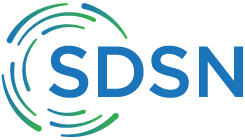Rationale and definition:
This indicator is designed to measure the proportion of children who are proficient in reading and comprehending text in their primary language of instruction and those that are able to, at the very least, count and understand core mathematical operations and concepts, as a proportion of total children at the end of the primary schooling cycle in the country. Proficiency will need to be defined at the national level, but should cover the ability to read, decode, comprehend and analyze text in their primary language of instruction. This is a new aggregate indicator proposed to ensure such proficiency can be captured, as can the learning of basic mathematical skills that are known to have strong links with future academic performance.
Disaggregation:
By sex and urban/rural.
Comments and limitations:
Since 2005, over 60 developing countries have used some measure of reading or have participated in internationally comparable assessments of reading comprehension. There are no global standards for defining “proficiency in reading” primarily because of differences in language, curriculum design, and pedagogical approaches. However, it is recommended that each country adopts and/or defines a core set of standards that can be assessed either through school-based or household-based assessments. Several countries have national standards of foundational numeracy skills that are identified in national curricula frameworks. It is further recommended that each country adopts and/or defines foundational numeracy skills standards that, while being locally relevant, are referenced in some way to international benchmarks. It is particularly important that foundational numeracy skills are comparable to global standards since these skills are relevant across countries and can form the basis for future global competitiveness of the country’s labor force.
The need to have measures of reading and mathematical skills has been stressed by various global initiatives including the Learning Metrics Task Force (which recommends such skills be measured at grade 3).1 This new indicator should build on the experiences of existing programs, including the Monitoring of Learning Achievement (MLA), Program on the Assessment of Student Achievement (PASA), Programme for International Student Assessment (PISA), Southern and Eastern Africa Consortium for Monitoring Educational Quality (SAQMEQ), the International Civic and Citizenship Education Study (ICCS), the Trends in International Mathematics and Science Study (TIMSS), and the Progress in International Reading Literacy Study (PIRLS).
This indicator should not be restricted to measurement of reading and mathematics; as countries develop comparable indicators for other domains of learning (physical wellbeing, social and emotional skills, culture and arts, literacy and communications, learning approaches and cognition, and science and technology), it is recommended that these indicators be tracked in a composite measure at the end of the primary school cycle. We support the ongoing efforts of the Learning Metrics Task Force to develop the indicators to track these areas globally. We also support ongoing efforts by the Task Force, UNESCO, UNICEF and other organizations in developing international benchmarks for these indicators, recognizing the variation of education systems and contexts across countries.
Preliminary assessment of current data availability by Friends of the Chair:
A
Primary data source:
Administrative data, or school-based or citizen led learning assessments.
Potential lead agency or agencies:
UNESCO.
UNESCO Institute for Statistics and the Center for Universal Education at the Brookings Institution (2013). Toward Universal learning: Recommendations from the Learning Metrics Task Force.

